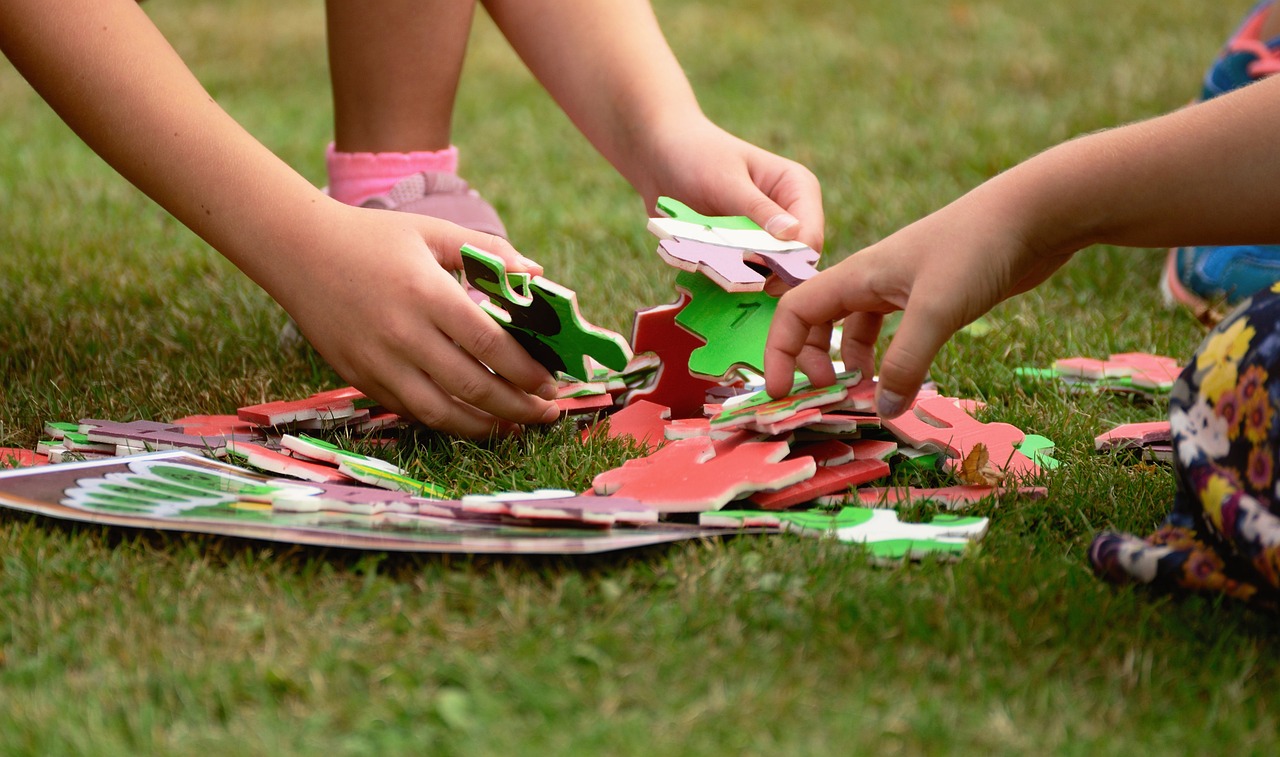6 Essential Problem-Solving Skills in Children

"Every problem is a gift. Without them, we wouldn't grow." - Tony Robbins
As children grow and navigate their way through life, they are bound to encounter various challenges and obstacles that require problem-solving skills. Developing strong problem-solving abilities not only helps kids overcome these obstacles but also sets them up for success later in life. As parents and teachers, it is our responsibility to equip children with the tools and knowledge they need to become effective problem solvers. In this blog post, we'll explore some practical tips and strategies that parents and teachers can use to teach kids how to problem solve. From breaking down problems into smaller parts to encouraging creative thinking, these tips are sure to help children become more confident and capable problem solvers.
Encourage Questions
One of the most effective ways to develop problem-solving skills in children is by encouraging them to ask questions. Children are naturally curious and have an innate desire to learn and understand the world around them. As parents and teachers, it's important to create a safe and supportive environment where children feel comfortable asking questions. Encourage your child to ask questions about everyday things, and take the time to answer them in a thoughtful and informative way. This will not only help them develop this essential skill but will also encourage a love of learning.
Break Problems Down into Smaller Parts
Another effective strategy for teaching problem-solving skills is to break down problems into smaller parts. By breaking down problems into smaller, more manageable pieces, children can better understand the problem and develop a plan of action to solve it. Encourage your child to identify the main problem and then break it down into smaller parts. For example, if your child is struggling with a math problem, encourage them to identify the different steps involved in solving it. This will help them develop problem-solving skills and build confidence in their ability to tackle more complex problems.
Brainstorm Multiple Solutions
Encouraging children to brainstorm multiple solutions is another effective strategy for developing problem-solving skills. Rather than just focusing on one solution, encourage your child to come up with multiple solutions to a problem. This will help them develop critical thinking skills and encourage them to think outside the box. Encourage your child to consider different perspectives and viewpoints and to evaluate each solution based on its pros and cons.
Encourage Creative Thinking
Encouraging creative thinking is another effective strategy for developing problem-solving skills. Creative thinking involves looking at problems in a new and different way, and can often lead to innovative and effective solutions. Encourage your child to think outside the box and to come up with unique and creative solutions to problems. This will help them develop problem-solving skills and build confidence in their ability to think creatively.
Allow Children to Fail
Allowing children to fail is another important strategy for developing problem-solving skills. Failure is a natural part of the learning process and can be a powerful tool for helping children develop problem-solving skills. When children fail, they learn important lessons about what went wrong and how to do better next time. Encourage your child to view failure as an opportunity to learn and grow, rather than as a reflection of their abilities.
Collaborative Problem-Solving
Encouraging collaborative problem-solving is another effective strategy for developing problem-solving skills. By working together with others, children can learn to communicate effectively, share ideas, and work towards a common goal. Encourage your child to work with others to solve problems and to consider different perspectives and viewpoints. This will help them develop problem-solving skills and build important social skills.
Conclusion
In conclusion, developing problem-solving skills is an important part of helping children navigate the challenges and obstacles of life. As parents and teachers, it's our responsibility to equip children with the tools and knowledge they need to become effective problem solvers. You can do that in a number of ways:
 encouraging questions
encouraging questions breaking problems down into smaller parts,
breaking problems down into smaller parts,  brainstorming multiple solutions,
brainstorming multiple solutions,  encouraging creative thinking,
encouraging creative thinking,  allowing children to fail, and
allowing children to fail, and  promoting collaborative problem-solving
promoting collaborative problem-solving
By doing the above, we can help children become more confident and capable problem solvers.
These tips and strategies are not only effective for teaching problem-solving skills, but they also encourage a love of learning and critical thinking skills. These skills will serve children well throughout their lives. As parents and teachers, we have a unique opportunity to help children develop problem-solving skills that will set them up for success in school, work, and beyond. With patience, practice, and a supportive environment, we can help children develop the problem-solving skills they need to overcome any challenge they may face.
Problem-Solving for Children FAQ
What are the steps of problem-solving for children?
The steps of problem-solving for children include: Identifying the problem
Identifying the problem Gathering information
Gathering information Brainstorming solutions
Brainstorming solutions Choosing a solution
Choosing a solution Implementing the solution
Implementing the solution Evaluating the outcome
Evaluating the outcome
What are the key attributes of a child who is a good problem solver?
Some key attributes of a child who is a good problem solver include: Creativity
Creativity Critical thinking skills
Critical thinking skills Flexibility
Flexibility Persistence
Persistence Ability to work well with others
Ability to work well with others Confidence
Confidence
What is problem-solving in simple words?
Problem-solving is the process of finding a solution to a problem or challenge.
What are some of the problem-solving activities for children?
Some problem-solving activities for children include: Puzzles and brain teasers
Puzzles and brain teasers Science experiments
Science experiments Building and construction activities
Building and construction activities Role-playing and pretend play
Role-playing and pretend play Group problem-solving challenges
Group problem-solving challenges
What are some examples of problem-solving in children?
Some examples of problem-solving in children include: A child who figures out how to build a tower out of blocks that won't fall down
A child who figures out how to build a tower out of blocks that won't fall down A child who finds a way to share toys fairly with a sibling or friend
A child who finds a way to share toys fairly with a sibling or friend A child who comes up with a creative solution to a group project in school
A child who comes up with a creative solution to a group project in school
How do you promote problem-solving in children?
You can promote problem-solving in children by: Encouraging creativity and imagination
Encouraging creativity and imagination Offering opportunities for children to make choices and decisions
Offering opportunities for children to make choices and decisions Allowing children to make mistakes and learn from them
Allowing children to make mistakes and learn from them Providing materials and activities that require problem-solving
Providing materials and activities that require problem-solving Asking open-ended questions that encourage critical thinking
Asking open-ended questions that encourage critical thinking
What are examples of skills in problem-solving in children?
Some examples of skills in problem-solving in children include: Identifying problems
Identifying problems Gathering information
Gathering information Brainstorming solutions
Brainstorming solutions Choosing a solution
Choosing a solution Implementing the solution
Implementing the solution Evaluating the outcome
Evaluating the outcome
Why are problem-solving skills important for children?
Problem-solving skills are important for children because they help children: Develop critical thinking and decision-making skills
Develop critical thinking and decision-making skills Build confidence and independence
Build confidence and independence Learn how to work well with
Learn how to work well with
How do you promote problem-solving skills in children?
You can promote problem-solving skills in children by: Providing opportunities for children to engage in open-ended and exploratory play
Providing opportunities for children to engage in open-ended and exploratory play Encouraging children to ask questions and explore different possibilities
Encouraging children to ask questions and explore different possibilities Encouraging children to take risks and try new things
Encouraging children to take risks and try new things Offering activities that require problem-solving, such as puzzles, riddles, and scavenger hunts
Offering activities that require problem-solving, such as puzzles, riddles, and scavenger hunts Modeling problem-solving behavior and talking through your own problem-solving process with children
Modeling problem-solving behavior and talking through your own problem-solving process with children
GSR Tips & Tricks
How best to use Goalstar Rewards to help your child achieve their goals? How It Works
Enjoy 4 weeks of free trial for each child. Register to Start 4 Weeks Free Trial!
Here is a very good article on problem-solving for children:
•Problem-solving steps: pre-teens and teenagers
 \
\
